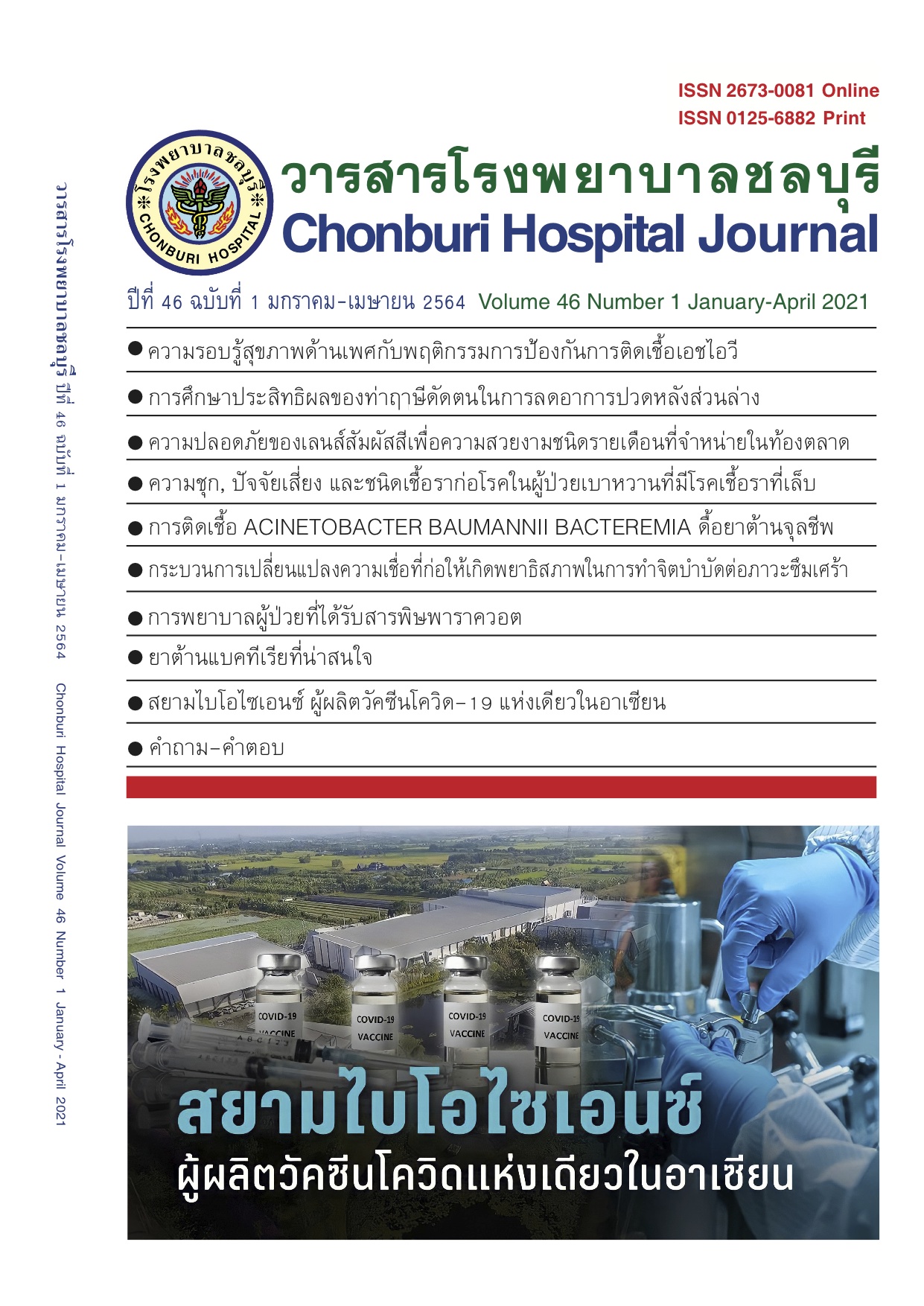The Incidence and Risk Factors of Antimicrobial Resistance Acinetobacter Baumannii Bacteremia in Chonburi Hospital
Keywords:
Incidence and risk factor, Antimicrobial Resistance, Acinetobacter baumanniiAbstract
Antimicrobial resistance Acinetobacter baumannii (A. baumannii) is a crucial health crisis which increase globally and it is increasing. Objectives: 1.To investigate the incidence and risk factors of antimicrobial resistance A.baumannii infection. 2.To identify death prediction model using logistic regression analysis.Method: A retrospective cross-section survey study was conducted at Chonburi Hospital between April, 2017 to March, 2018. The data were retrospectively collected from1-year medical records. Results: The incidence of the antimicrobial resistance from A.baumannii bacteremia was 137 patients. We found that patients with age lower than 65 years (63.5 %) was a significant (p=0.014) risk factor for death. The other factors namely- female gender (54 %), general wards (67.2 %), duration staying in the hospital before infections > 7 days (57.7 %) and an insertion of infusion tubes before infection (56.2 %), did not significantly. However, insertion of infusion tubes factor related to age were significant (p=0.004). Two drug related problems were found among the patients with antimicrobial resistance from A. baumanii bacteremia. Firstly, antimicrobial under-treatment due to the Chonburi hospital guideline was found in 21 patients (25.30%). Secondly, improper drug selection was detected in 62 patients (74.70%). Finally, the prediction equation for death or survival was established via multiple logistic regression. The equation model to predict mortality was Z = (-0.822) Female + (0.683) ICU - (0.552) Duration + (0.653) Tube + (19.396) DRP1 – (0.358) DRP2 – (0.895) Colistin +(0.359) Piperacillin-tazobactam – (0.310) Meropenem + (1.736) Age (Hit rate = 76.1%). Conclusion, the incidence and risk factors of antimicrobial resistance of A. baumannii infection was age which was also associated with drug related problem and incurred possibility of death.
Keywords: Incidence and risk factor, Antimicrobial resistance, Acinetobacter baumannii
Downloads
Published
Issue
Section
License
Copyright (c) 2021 Chonburi Hospital Journal

This work is licensed under a Creative Commons Attribution-NonCommercial-NoDerivatives 4.0 International License.
บทความที่ได้รับการตีพิมพิ์เป็นลิขสิทธิ์ของวารสารโรงพยาบาลชลบุรี
